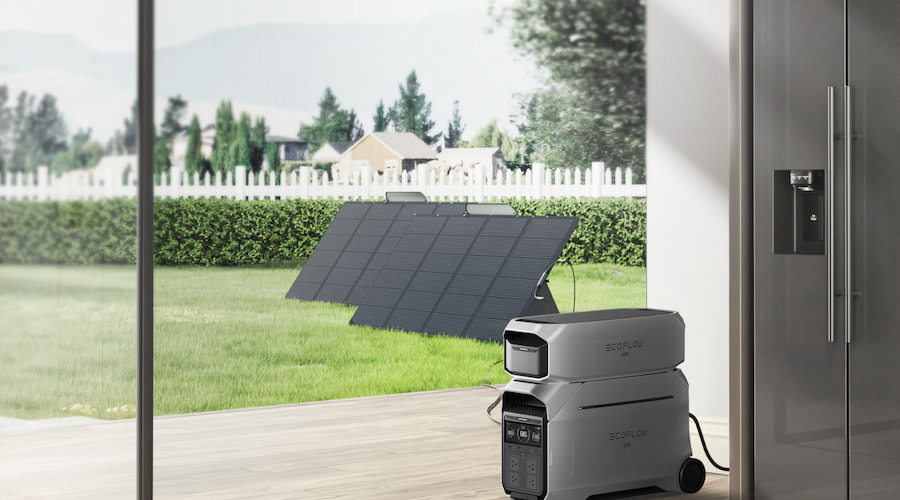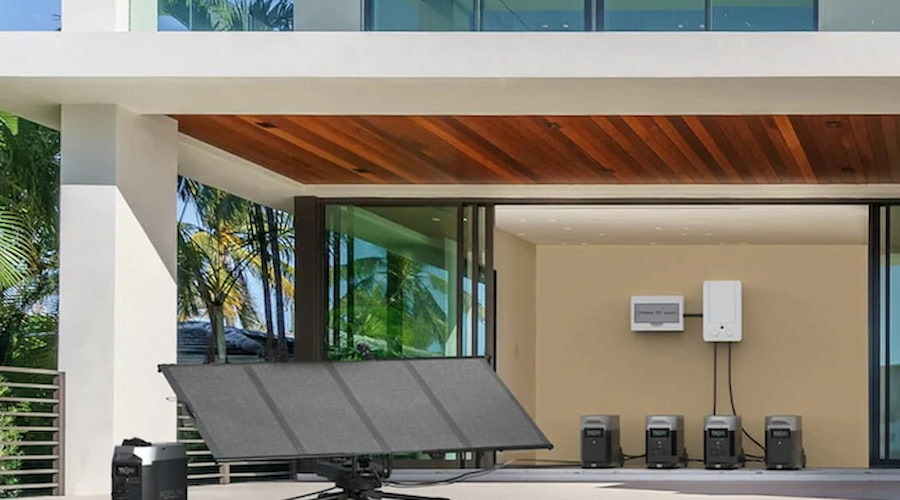How Many Watts Does a TV Use? Tips to Slash Energy Use!
Wondering how many watts does a TV use? You’re not alone. With energy costs on the rise across Australia, more and more households are taking a closer look at how everyday appliances like televisions impact their power bills.
Whether you’re kicking back for a Netflix binge on a massive 75-inch screen or just catching the nightly news on a modest model, TVs use varying amounts of electricity—and that adds up over time. In this guide, we’ll walk you through the typical power usage for different TV sizes, what that means for your energy bill, and how you can cut back without missing your favourite shows.
How Much Electricity Does a TV Use?
The answer to “How many watts does a television use?” depends on a few key things—like the size of the screen, the display technology, and how you use it. For instance, a small LED TV might only use 30 watts, while a larger 55-inch LCD or Plasma TV could consume upwards of 150 watts or more.
Here’s a table to give you a better idea of the typical television energy consumption:
Screen Size (inches) | LED TV | LCD TV | Plasma TV | OLED/QLED TV |
15” | 15W | 18W | 65W | N/A |
17” | 18W | 20W | 75W | N/A |
19” | 20W | 22W | 80W | N/A |
20” | 24W | 26W | 90W | N/A |
21” | 26W | 30W | 100W | N/A |
22” | 30W | 40W | 110W | N/A |
24” | 35W | 50W | 120W | N/A |
30” | 38W | 60W | 150W | N/A |
32” | 41W | 70W | 160W | N/A |
37” | 44W | 80W | 200W | 66W |
42” | 57W | 120W | 220W | 75W |
50” | 72W | 150W | 300W | 89W |
55” | 80W | 180W | 370W | 98W |
60” | 88W | 200W | 500W | 107W |
To figure out exactly how much power your specific TV uses, take a look at the label on the back or side—it should list the wattage. If it doesn’t show the wattage directly but gives you the current (in amps) and voltage (in volts), you can calculate it yourself using this simple formula: Watts = Amps × Volts.
How Much Does It Cost to Run a TV?
Now that you’ve got a handle on the typical wattage—or in other words, how much electricity does a TV use per hour—the next question is: how much does that actually cost you?
To figure out the running cost of your TV, you just need to know three things:
The wattage of your TV (from the previous section).
How many hours you use it per day.
Your electricity rate – the average in Australia is between 20 and 45 cents per kilowatt-hour (kWh), but this varies by state and provider.
Here’s a quick example:
A 55” LED TV uses around 80 watts (0.08 kW).
If you watch 5 hours a day: 0.08 kW × 5 = 0.4 kWh/day.
Over a year: 0.4 × 365 = 146 kWh.
At 30c per kWh: 146 × $0.30 = $43.80/year.
So, running that 55” TV for five hours a day costs you roughly $3.65 per month. Not bad—but the numbers can creep up with bigger screens or longer usage.
To give you an overview in real life, we’ve pulled cost estimates from the South Australian Government, which are based on average energy prices from major retailers like AGL and Origin Energy, and assume 10 hours of viewing per day over a 90-day billing period.
Screen Size (inches) | TV Type | Typical Power (W) | Hourly Cost | Quarterly Cost (Est.) |
19”–35” | LED | 18–123 W | $0.006–$0.04 | $5.40–$36.00 |
LCD | 21–144 W | $0.007–$0.05 | $6.30–$45.00 | |
35”–43” | LED | 38–195 W | $0.01–$0.07 | $9.00–$63.00 |
LCD | 53–253 W | $0.02–$0.09 | $18.00–$81.00 | |
Plasma | 88–290 W | $0.03–$0.10 | $27.00–$90.00 | |
43”–59” | LED | 52–255 W | $0.02–$0.09 | $18.00–$81.00 |
LCD | 69–355 W | $0.02–$0.12 | $18.00–$108.00 | |
Plasma | 94–399 W | $0.03–$0.14 | $27.00–$126.00 | |
Older TVs | CRT (34–51cm) | 36–82 W | $0.01–$0.03 | $9.00–$27.00 |
Large (2009 models) | LCD (42”+) | 100–275 W | $0.03–$0.10 | $27.00–$90.00 |
Plasma | 150–420 W | $0.05–$0.15 | $45.00–$135.00 |
What Factors Affect TV Wattage Consumption?
As you can see, screen size and TV type can make a big difference in television electricity consumption. Besides that, several other factors can also influence how many watts your TV uses and how much it adds to your power bill. Let’s take a closer look:
Screen Size
Bigger TVs generally use more electricity. A 75-inch screen has more pixels to light up and more hardware to power than a 32-inch model, so you’ll see a noticeable jump in wattage.
Display Technology
LED/LCD TVs are the most energy-efficient options on the market today.
OLED and QLED TVs offer stunning visuals but tend to draw a bit more power, especially at higher brightness settings.
Plasma TVs, which were common in the early 2000s, use far more electricity than modern screens—sometimes double or even triple.
CRT TVs (the old box-style ones) are surprisingly power-hungry for their size.
Brightness and Settings
If you love a high brightness level, enjoy 4K content, or often watch in HDR (High Dynamic Range) or “vivid” mode, just know these features all lead to higher TV energy usage.
Daily Usage
It seems obvious, but the more hours your TV is on each day, the more energy it uses. Ten hours a day versus two makes a massive difference over a billing quarter.
Vampire Power
Even when your TV is “off,” it may still draw a small amount of power (typically 0.5–1W) in standby mode. It might not sound like much, but over a year, that adds up—especially if you have multiple devices plugged in 24/7.
Simple Ways to Cut Down TV Energy Use
Want to keep your TV streaming marathons going but save on electricity bills? Here are a few easy, practical steps you can take:
Use Energy-Saving or Eco Mode
Most modern TVs come with built-in energy-saving features. Switching to Eco Mode can automatically adjust brightness, disable unused features, and reduce power consumption.
Turn Down the Brightness
You don’t need max brightness unless you’re watching in a sunny room. A lower setting is easier on your eyes and your electricity bill.
Disable Extra Features
Disable features like voice control, Bluetooth, and auto-updates, which can consume additional power.
Unplug or Switch Off the Power Board
Even in standby mode, TVs still draw a small amount of power. Unplugging it from the wall (or using a power board with an on/off switch) ensures your TV isn’t drawing electricity when you’re not watching.
Upgrade to an Energy-Efficient Model
If you’re still using an old plasma or CRT, it might be time for an upgrade. Look for TVs with a good energy star rating—the more stars, the more efficient. Over time, a newer TV can pay for itself in energy savings.
Can Solar Panels Help You Save on TV Power?
If you’re already thinking about ways to cut energy costs—or want peace of mind during a blackout—solar power has probably crossed your mind. The answer? Yes, solar panels can absolutely help offset the electricity your TV and other devices use every day.
When you’ve got a rooftop solar system installed, your home will automatically use the power generated by your panels first. So, if you’re watching TV during daylight hours, chances are it’s running on solar energy. Add a solar battery into the mix, and you can store any unused electricity for use at night or during cloudy weather. It’s a smart, eco-friendly, and long-term way to reduce your reliance on the grid and bring your bills down.
But let’s be real—rooftop solar can be a significant upfront investment, and not everyone’s in a position to commit to a full system just yet.
That’s where portable solar generators come in. These plug-and-play setups pair a portable power station with solar panels, offering an easy entry point into solar—and reliable emergency backup in case of power outages.


EcoFlow Solar Generator for Home
But can solar generators power a house, you might ask? Well, yes if you pick a powerful, scalable system like the EcoFlow DELTA Pro solar generator.
The EcoFlow DELTA Pro Portable Power Station offers a massive 3600W continuous output (surging to 7200W), which means it can easily handle the wattage for powering a house. Think about your TV, fridge, Wi-Fi router, and even heavy-duty appliances like air cons or dryers. If you need even more power, you can pair two units together and integrate them into your home’s electrical circuits using EcoFlow’s Smart Home Panel.
A single DELTA Pro unit boasts an impressive 3.6kWh battery capacity, which is expandable up to 25kWh—enough to keep essential appliances running for a few days depending on how you use it. And with built-in smart features, you can control and monitor your usage directly from your phone, making it easier to manage energy consumption day-to-day.


You can fully recharge the power station from a standard wall outlet in just 1.9 hours, or charge from an EV station, solar panels, or multiple sources simultaneously (up to 6500W input).
What makes it truly solar-ready is the 1600W max solar input, which means you can recharge the system sustainably in as little as 2.8 to 5.6 hours. Pair it with the EcoFlow 400W Portable Solar Panel. These panels are compact, foldable, and efficient, with up to 23% solar conversion rates. They’re built tough too, with an IP68 waterproof rating and a self-supporting design that lets you angle them for maximum sun exposure.
Conclusion
So, back to that original question—how many watts does a TV use? The short answer: it depends. But now you’ve got a clear picture of what affects your TV’s energy use, how much it could be costing you, and a few simple ways to keep those costs low.
By switching to energy-efficient models, adjusting your viewing habits, or even powering your TV with solar, you’ve got more control over your energy use than you might’ve thought. And with electricity prices where they are, every little bit helps.
FAQs
Will a 300-watt generator run a TV?
Yes, a 300-watt generator can run most standard TVs, especially modern LED models, which usually use between 30 to 120 watts depending on size. Just make sure you’re not plugging in other high-power devices at the same time, as that could push it over the generator’s capacity.
What size battery do you need to power a TV?
To power a TV, you’ll want a battery that can comfortably supply the TV’s wattage for the number of hours you plan to watch. For example, if your TV uses 100 watts and you want to run it for 5 hours, you’ll need at least a 500Wh battery. To be safe, go slightly larger to account for efficiency losses—something like a 600–800Wh battery would do the job well for moderate use.
How many solar panels are needed to power a TV?
You only need one small solar panel to power a TV (using around 30–150W)—typically a 100W to 200W panel will do the job. For example, a 42”+ LCD TV (100W) used for 5 hours a day uses 0.5kWh. A 200W solar panel in good sunlight can easily generate that much in a few hours. Just make sure to pair it with a battery if you plan to watch at night or on cloudy days.